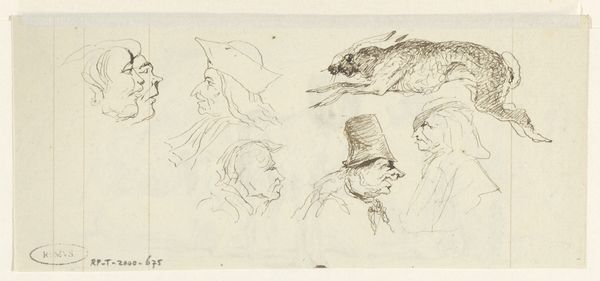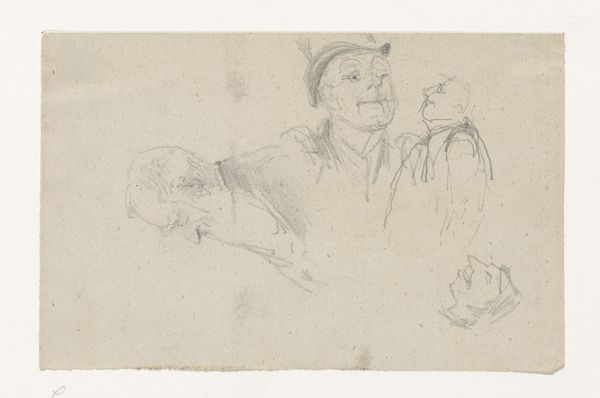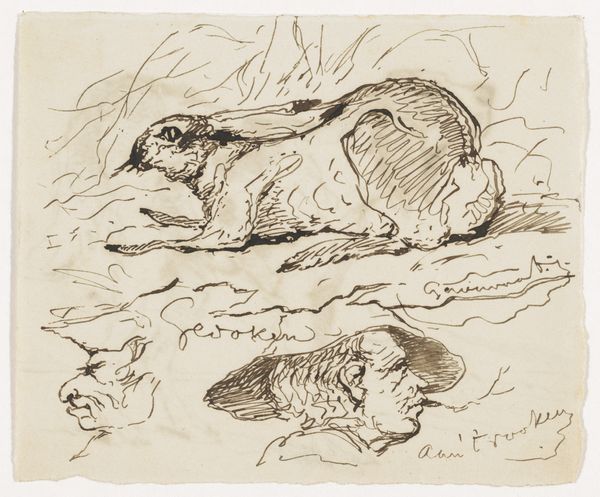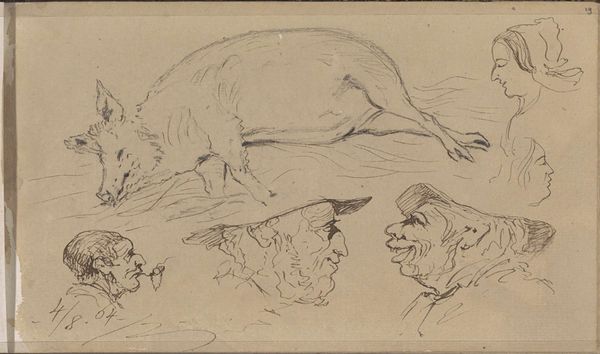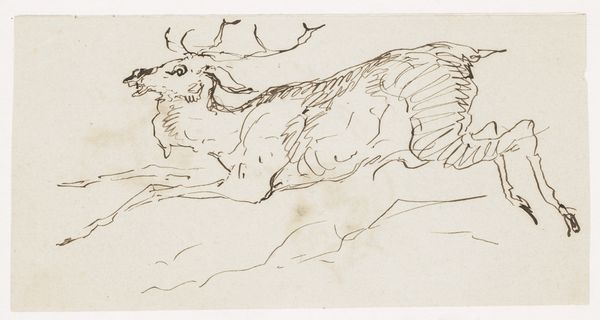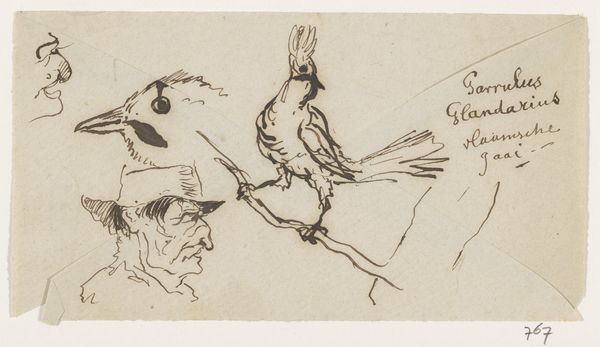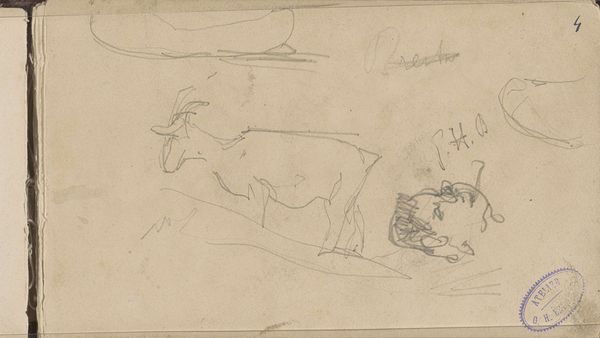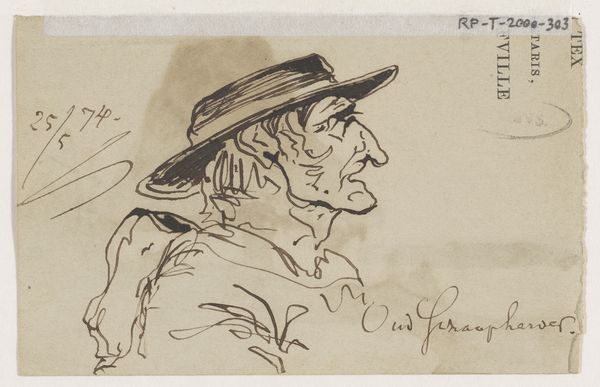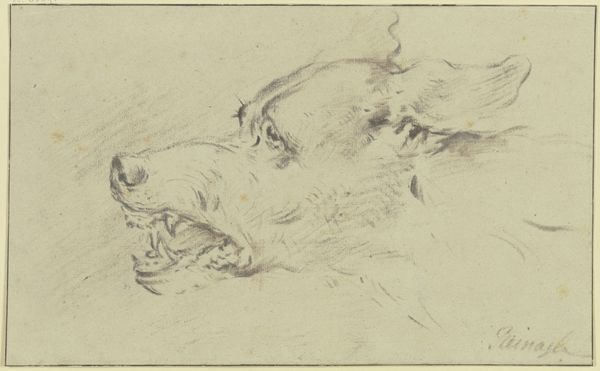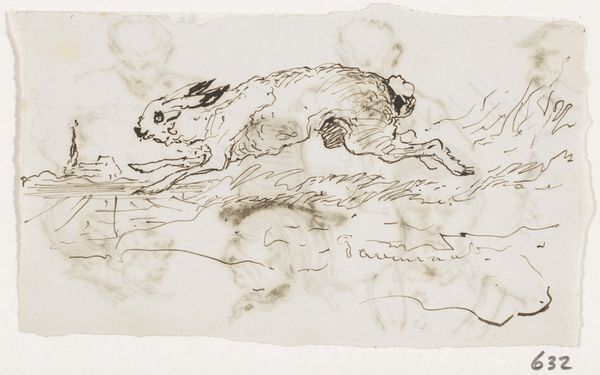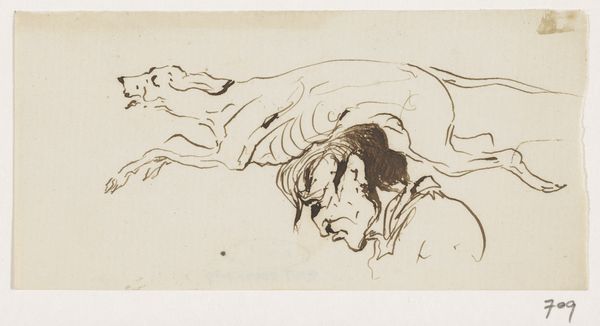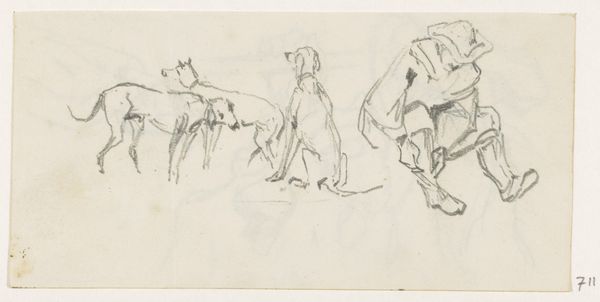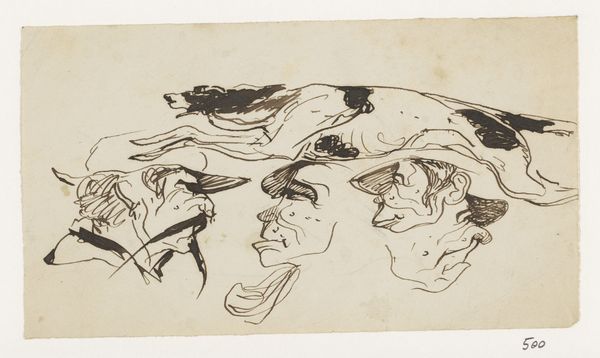
drawing, ink, pen
#
portrait
#
drawing
#
pencil sketch
#
landscape
#
figuration
#
ink
#
pen-ink sketch
#
pen
#
genre-painting
Dimensions: height 83 mm, width 101 mm
Copyright: Rijks Museum: Open Domain
Curator: Here we have "Haas en jager," or "Hare and Hunter," a pen and ink drawing by Johannes Tavenraat, estimated to be made sometime between 1840 and 1880. What’s your immediate take? Editor: I’m struck by the feeling of a fleeting moment—almost like a half-remembered dream. The rabbit, especially, seems caught mid-leap, and the hunter below, he's... timeless? Curator: Timeless is a great word. To me, Tavenraat captured this everyday tension between predator and prey, literally. Hunting, after all, carries a very loaded history tied to land ownership, social class, and access to resources, something definitely worth unpacking here. Editor: Absolutely, the right to hunt, or the lack thereof, historically shaped hierarchies. I am interested in what is evoked by this composition. The artist has chosen to use a simple pen and ink. Is this intentional so as not to give favor to the hunter in that he uses simplistic, unadorned medium? Curator: It's intriguing to ponder that maybe Tavenraat opted for ink to convey rawness, and maybe even make a statement on ethics surrounding the act of hunting, considering class distinctions during this period. But on the flip side, genre paintings were also popular then—showing everyday life, almost romanticized at times. Editor: It could easily be that, it’s definitely multi-layered. It makes me wonder who the intended audience was and whether the piece served a purpose beyond art, perhaps communicating ideas about societal roles, economic disparity, the hunter/hunted dichotomy—which transcends just the literal reading of hare versus human. Curator: You've totally got me thinking... It might be worth seeing how it was originally received back then. Because context, well, it changes everything, doesn't it? And yet, as art it also lives outside that particular context now. Editor: Precisely! Now we look through our lenses—informed by contemporary ideas of social justice. And that interplay is, for me, where this work truly speaks.
Comments
No comments
Be the first to comment and join the conversation on the ultimate creative platform.
